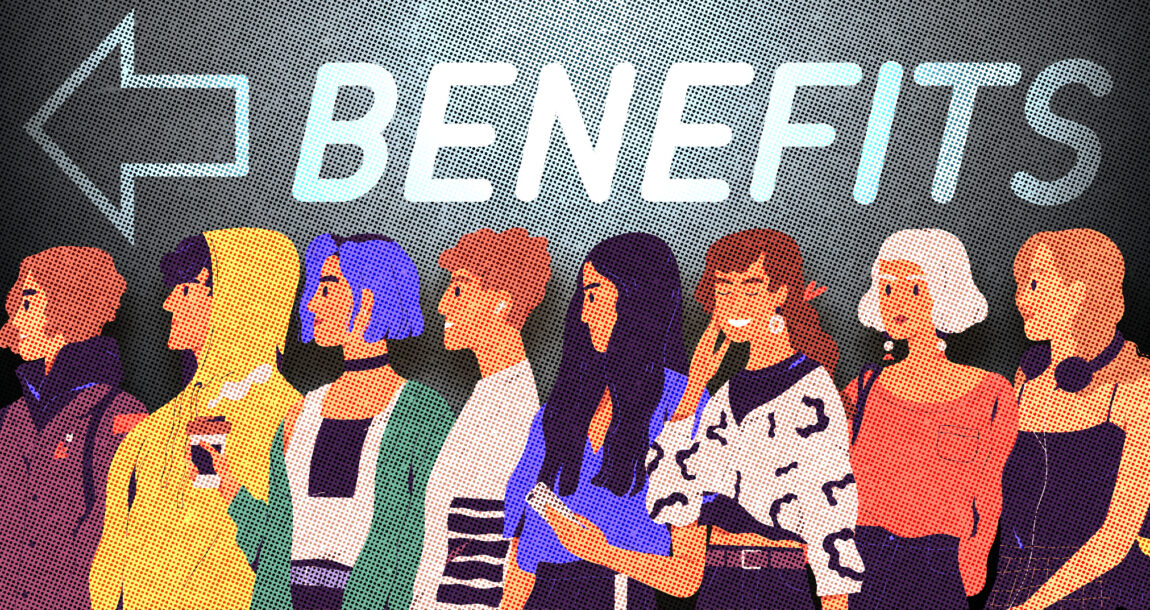What Gen Z wants in workplace benefits

Change is an inevitable fact of life and U.S. workforce expectations have certainly seen a lot of that over the past few years. To adapt, organizations must revamp their company culture and rethink their benefits offerings. Nowhere will this be more crucial than when it comes to attracting the tech-savvy, entrepreneurial and highly adaptive generation known as Generation Z.

Composed of people born between 1997 and 2012, Gen Z has already partially entered the workforce and will become an increasingly integral part of it in the coming years. While usually lumped together with the millennial generation due to their commonalities, Gen Z tends to be much more demanding in their workplace expectations. They also tend to be a lot more technologically savvy than their predecessors: they’ve never really known a life without the internet, mobile phones and social media.
Most importantly though, members of Gen Z can be characterized as highly individualistic, socially aware and ambitious for change. For these reasons, they can be a highly potent force when their needs and goals are properly aligned with those of an employer. But what are these needs and goals exactly?
What does Gen Z want?
Every generation has its own vision of what work should be. For baby boomers and Generation X, that vision was stability, climbing the corporate ladder and getting the gold watch at retirement. For millennials, it’s about flexibility, purpose and balance. Members of Gen Z share the same vision as millennials, but they tend to take it to an extreme. Take flexibility for example. Millennials typically want flexible work environments, yet they also prize job stability, especially older millennials who are starting to settle down and start families.
By contrast, Gen Z wants flexibility not only in how they work, but also in how they can move from one employer to another. This shouldn’t be too surprising given that the oldest Gen Z workers are only in their early 20s and are still trying to figure out what they want out of life. Yet they also have a much broader perspective on the opportunities the world has to offer. As such, it’s not an exaggeration to say that the average Gen Z worker will likely have 20 or more jobs and employers throughout their career.
This is a key thing to understand when it comes to designing benefits packages for Gen Z. They aren’t attracted by the current system of “golden handcuffs” that ties benefits to an employer. If anything, they find golden handcuffs to be extremely off-putting. Instead, they want flexible and portable benefits that they can take with them when they switch employers.
How to cater to their workplace needs
I could start off by listing some of the key benefits that Gen Z looks for from an employer. But that would miss the point that I’m trying to get at. It’s not about offering the right benefits. Rather, it’s about giving these workers the freedom to choose whatever benefits they wish and the ability to take those benefits with them when they switch employers.
Consider how you might normally put together a benefits package. You’d set aside a budget for setting up group benefits programs you think your employees will value, allow each employee to choose from your preselected list, and then collect any employee payments through payroll deductions. This might have worked with older generations, but it introduces the exact sort of inflexibility that Gen Z isn’t fans of.
A better approach is to take that money you were going to spend anyway on preselected programs and instead give it to the employee through a portable lifestyle account. Employees can then choose whichever benefits are the most meaningful to them. This kind of setup is already common with independent contractors and is perfectly suited for today’s remote work environment. Some examples of employee benefits that can be part of a lifestyle account include individual health and life insurance, a retirement plan such as 401(k) and 403(b), and health savings accounts.
To simplify things, such portable benefits should be a “no-strings” option that does not include access to any company group policies. In addition, employees need to know that they are entirely responsible for purchasing and maintaining their coverage plans. HR managers can and should provide advice on the third-party policies that employees can choose from, but the final decision should rest with the employee.
Ultimately, that free choice is what makes portable benefits a win-win for everyone. Employers are freed from having to guess the right benefits that will attract employees, employees get to pick the benefits they want, and the benefits industry gets to see which policies are the most appealing to Gen Z.
Benefits have always been vital for attracting and retaining talent and this remains true for the Gen Z workforce. However, the wants and needs of this generation differ significantly from their predecessors and will require businesses to reevaluate their approach to employee benefits. Getting this new approach right isn't so much about offering the right benefits but giving employees the freedom to choose whichever portable benefits most appeal to them.
Bob Gaydos is the founder and CEO of Pendella. He may be contacted at [email protected].
© Entire contents copyright 2023 by InsuranceNewsNet.com Inc. All rights reserved. No part of this article may be reprinted without the expressed written consent from InsuranceNewsNet.com.





Study: Young people buying insurance worry about wrong risk
8 steps for winning with younger clients
Advisor News
- Flexibility is the future of employee financial wellness benefits
- Bill aims to boost access to work retirement plans for millions of Americans
- A new era of advisor support for caregiving
- Millennial Dilemma: Home ownership or retirement security?
- How OBBBA is a once-in-a-career window
More Advisor NewsAnnuity News
- 2025 Top 5 Annuity Stories: Lawsuits, layoffs and Brighthouse sale rumors
- An Application for the Trademark “DYNAMIC RETIREMENT MANAGER” Has Been Filed by Great-West Life & Annuity Insurance Company: Great-West Life & Annuity Insurance Company
- Product understanding will drive the future of insurance
- Prudential launches FlexGuard 2.0 RILA
- Lincoln Financial Introduces First Capital Group ETF Strategy for Fixed Indexed Annuities
More Annuity NewsHealth/Employee Benefits News
Life Insurance News
- Private placement securities continue to be attractive to insurers
- Inszone Insurance Services Expands Benefits Department in Michigan with Acquisition of Voyage Benefits, LLC
- Affordability pressures are reshaping pricing, products and strategy for 2026
- How the life insurance industry can reach the social media generations
- Judge rules against loosening receivership over Greg Lindberg finances
More Life Insurance News